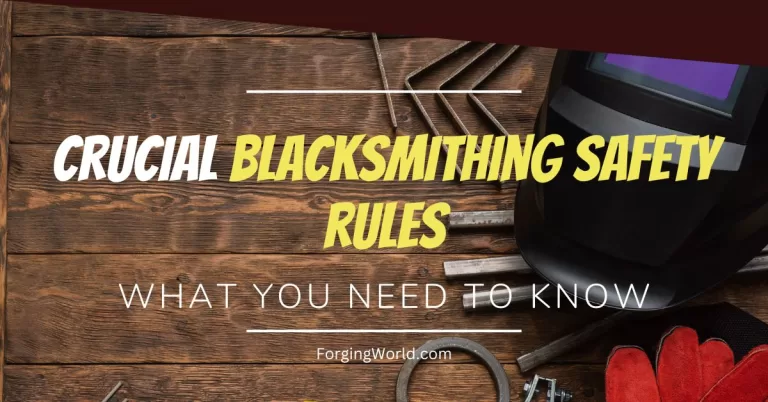A well-maintained ball peen hammer is an essential tool for blacksmiths and bladesmiths. Over time, handles can become worn or damaged, affecting the hammer’s performance and posing a safety risk.
This guide will walk you through the process of replacing a ball peen hammer handle, ensuring your hammer stays in top shape and ready for your next forging project.
Let’s get started!
When to Replace Your Hammer Handle
Before diving into the replacement process, it’s essential to know when to replace your hammer handle. Signs of a handle in need of replacement include:
- Cracks or splits in the wood
- Loose or wobbly head
- Excessive wear or splintering
If you notice any of these issues, it’s time to replace your handle to ensure both safety and performance.
What You’ll Need
Gather the following tools and materials before starting the handle replacement process:
- Replacement handle (choose a quality handle suitable for your ball peen hammer)
- Wood wedge (included with most replacement handles)
- Metal wedge (optional)
- Saw or hacksaw
- Hammer
- Wood rasp or coarse file
- Sandpaper
- Wood glue
- Wood finish or linseed oil
Step-by-Step Handle Replacement Guide
Follow these steps to replace your ball peen hammer handle:
1. Remove the Old Handle
First, remove the old handle from the hammerhead. You can do this by cutting off the handle near the head and then carefully driving a punch or chisel through the handle hole to push out the remaining wood.
2. Prepare the New Handle
Next, prepare the new handle by sanding off any rough spots or imperfections. You may need to use a wood rasp or coarse file to adjust the size of the handle’s tenon (the part that fits into the hammerhead) so it fits snugly into the eye of the hammerhead.
3. Test Fit the Handle
Insert the handle’s tenon into the hammerhead’s eye to check the fit. The tenon should be slightly larger than the eye, creating a tight fit. If necessary, use your rasp or file to make any final adjustments to the tenon’s size.
4. Secure the Handle
Once you have the perfect fit, apply wood glue to the tenon and insert it firmly into the hammerhead’s eye. Wipe away any excess glue with a cloth.
5. Install the Wood Wedge
Place the wood wedge into the slot on the tenon and drive it in with a hammer until it’s firmly seated. This will help secure the handle and prevent it from coming loose. Trim any excess wedge material flush with the top of the hammerhead using a saw or hacksaw.
6. Install the Metal Wedge (Optional)
For added security, you can install a metal wedge diagonally across the wood wedge. Gently tap the metal wedge into place with a hammer until it’s flush with the hammerhead. This step is optional but recommended for heavy-duty use.
7. Finish the Handle
Finally, sand the entire handle smooth and apply a wood finish or linseed oil to protect it and provide a comfortable grip.
Frequently Asked Questions
Select a handle made of high-quality, durable wood, such as hickory or ash. Ensure that the handle length and tenon size match the requirements of your hammerhead.
While metal handles are available, they are not as common or recommended for ball peen hammers. Wooden handles provide better shock absorption, reducing the strain on your hand and arm during use.
The frequency of handle replacement depends on usage and wear. Regularly inspect your handle for signs of damage, such as cracks, splits, or excessive wear. Replace the handle immediately if you notice any of these issues to ensure safety and performance.
To extend the life of your handle, maintain it properly by keeping it clean and applying a wood finish or linseed oil periodically. Avoid striking the handle directly against hard surfaces or using it as a lever, which can cause damage.
Yes, you can make your own handle if you have woodworking skills and the necessary tools. Choose a suitable piece of hardwood, such as hickory or ash, and shape it to fit the eye of your hammerhead. Be sure to follow the same steps outlined in our guide when fitting and securing the handle.
While minor repairs can be made using wood glue or epoxy, it is generally safer and more effective to replace a damaged handle. A repaired handle may not provide the same strength or stability as a new one, increasing the risk of injury or damage during use.
Final Thoughts
Now you have a newly replaced ball peen hammer handle, ready for your next forging project. By following these steps and maintaining your hammer properly, you’ll ensure its longevity and safety.

